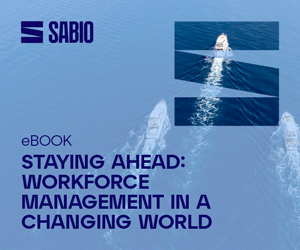Dr Nicola Millard, on behalf of Enghouse Interactive, shares some interesting insights into the current state of the contact centre industry.
“The times they are a-changing”… according to Bob Dylan anyway.
It is fair to say that the past year has been an odd one. We’ve been socialising over video rather than down at the pub, our living room has become our office, and we’ve been increasingly shopping online because physical stores have been shut. But has the pandemic fundamentally changed our behaviours for good?
Since my crystal ball is still broken, research remains the most reliable way of figuring out what’s in customers’ minds. For the past 10 years BT has been doing a biennial global temperature check of customer priorities for customer experience.
The last research was published in February 2020, the last month of normality for many of us, so we decided to do an extraordinary edition in February 2021 to see what a difference an (extraordinary) year has made.
Plus ça Change, Plus C’est la Même Chose
If there was a phrase to sum up the research it would be “plus ça change, plus c’est la même chose”. Many customer attitudes towards customer experience haven’t shifted one iota during the 12 months of the pandemic.
Expectations of service are still extremely high. For example, 77 percent say that they buy more from companies that offer excellent customer service, up 1 percent from 2020.
The main behavioural shifts lie in four areas:
- More people are finding dealing with service issues more exhausting (73 percent, up 9 percent from a year ago). This isn’t surprising because most of us have a pandemic to cope with and are performing extreme juggling. Organisations which are adding to our stress is not something we need at the moment.
- Although many of us have shifted to digital channels, a massive 82 percent of customers are reporting that they’re struggling to do some of the basics online – such as changing their order, choosing delivery slots, or even making payments!
- Convenience is currently ranked as more important than price (58 percent of customers, up 7 percent from 12 months ago), as people confined to their houses shift to home delivery and hyper-local services.
- The biggest shift has been around the use of video chat – with 85 percent saying they’d like to engage with organisations over video. This has been fuelled by the video culture that has dominated during the pandemic and is likely to continue to develop in niche areas such as remote heath care, financial advice, product demonstrations, inspection/installation/diagnostics, and (thanks to our connected doorbells) where to put parcels when we eventually leave the confines of our house. Whether video will become a dominant contact channel longer term is debatable (especially since contact centre agents report that customers are often doing something else when they contact them – including eating, cooking, driving, and watching TV).
Supporting Hybrid Super Agents
Contact centres have become a lifeline during the pandemic and, generally, customers report that they have risen to the occasion. But we were curious to see how agents had adapted to serving customers in these extraordinary times.
The perfect storm of cloud, connectivity and collaboration tools has made this a far less painful pandemic now than it would have been 10 years ago with many organisations able to mobilise homeworking agents almost overnight.
Contact centre homeworking isn’t new but it hadn’t been embraced wholeheartedly by the industry.
BT’s first trials were in 1992, when we had to bulldoze people’s front gardens to get connectivity into the home (because WiFi and 4G/5G didn’t exist) and video conferencing units were the size of a small refrigerator – this was extremely expensive to set up!
Despite times definitely a-changing from a technology and cost perspective, it took a pandemic to shift thinking.
1 in 5 of the agents we asked in the UK, US and India said that they were working from home permanently. This was heavily dependent on the availability of technology (e.g. laptops), good connectivity, and an appropriate space to work (particularly since many agents are young, and often share spaces with friends, or family – especially in India).
However, 71 percent said that they’d like to work from home at least some of the time in the future if they could get the right IT, good connectivity, some privacy, and (most importantly) a comfy chair.
One thing agents noticed during the pandemic was that the difficulty and complexity of issues coming in from customers had increased– and the number of customers who were impatient, stressed and downright rude had also gone up.
This translated into them needing help from a colleague or team leader for 1 in 5 of customer contacts. COVID-safe work environments – whether remote or socially distanced – means it’s more difficult for agents to swivel their chair around and grab their nearest available co-worker or flag their supervisor down.
Because of this, they need to be super powered by great technologies that allow them to collaborate and find answers easily (including access to comprehensive knowledge bases, collaboration tools, and AI assistants).
Cultural Differences Are Striking
Most striking, though, was the variation in agent experience across the three countries we looked at. The UK ranked significantly lower in employee satisfaction, staff turnover, quality of technology and colleague support, and higher in terms of anxiety than agents in India and the US.
This may have been because most parts of the UK had just gone into a second lockdown during the time that we did the research and the national mood was more negative than in the US and India.
However, it does point towards the fact that the support agents need goes well beyond the technology (especially during a pandemic) because, as they acknowledge themselves, they are a valuable part of the brand experience, and they build loyal customers.
Team leaders, especially, have had a tougher job to do as they can’t rely on managing by walking around, or doing sit-by coaching when their agents are dispersed across multiple locations – which is likely to become more a norm in the future as more hybrid ways of working kick in.

Nicola Millard
Rather than assume they have the skills to do this in a digital world, team leaders also need to be trained and supported to help to lead, motivate and engage their teams, wherever they happen to be.
What finally emerges from the pandemic is up for grabs – but, as we reinvent the ways that we work, rest and play, creating engaging customer experiences is key – and the contact centre is a critical component in doing this. For the rest: “The answer, my friend, is blowin’ in the wind” (thanks, again, to Mr Dylan).
This blog post has been re-published by kind permission of Enghouse Interactive – View the Original Article
For more information about Enghouse Interactive - visit the Enghouse Interactive Website
Call Centre Helper is not responsible for the content of these guest blog posts. The opinions expressed in this article are those of the author, and do not necessarily reflect those of Call Centre Helper.
Author: Enghouse Interactive
Published On: 23rd Mar 2021 - Last modified: 25th Apr 2024
Read more about - Guest Blogs, Enghouse Interactive, Nicola Millard






 Enghouse Interactive delivers technology and expertise to help bring your customers closer to your business through its wide range of customer contact solutions.
Enghouse Interactive delivers technology and expertise to help bring your customers closer to your business through its wide range of customer contact solutions. 






























